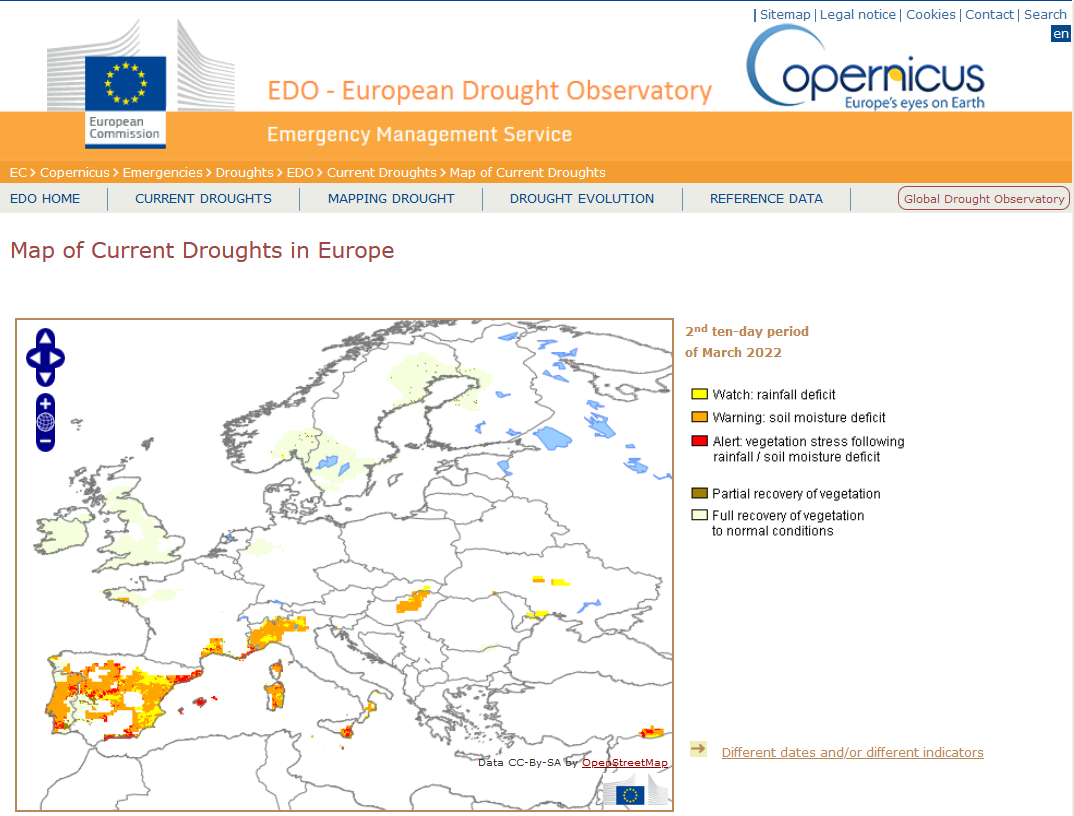The European Droughts Observatory (EDO) lately issued two new reports, depicting the ongoing critical situation in the western Mediterranean and in the North of Italy, respectively.
The “Drought in western Mediterranean - February 2022” report shows that a large and severe drought has been affecting the western Euro-Mediterranean region. The severe precipitation deficit is already posing a threat to water resources and livestock, while heavy impacts on crops and reservoir storage are expected if the drought conditions will persist. Severely drier than normal conditions are forecasted in the western Euro-Mediterranean region. These forecasts currently represent the main concern, as they point to a possible evolution of the ongoing drought into an extreme event. Monitoring such evolution in the next months is essential for risk and impact assessment.
The “Drought in northern Italy - March 2022” report inform about the severe drought which has been affecting northern Italy and the Po River basin in particular. Dry conditions are related to a persistent lack of precipitation since December 2021. The severe precipitation deficit is already affecting water resources. Water competition from different sectors is likely to start sooner than usual, particularly at the beginning of the irrigation period, usually expected to start in April (e.g. for rice). The lack of precipitation may cause severe impacts as soon as re-growth takes up speed in spring. Drier than normal conditions are forecasted for most of Italy (and southern Europe in general) for the next three months. This makes it less probable that abundant precipitation will bring relief to the current situation, and it rises concerns about widespread and concurrent impacts.

A screenshot from the European Drought Observatory